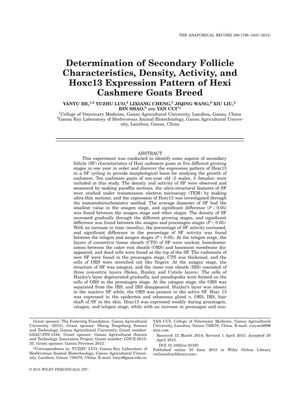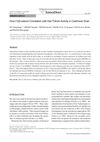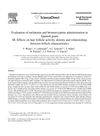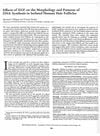Determination of Secondary Follicle Characteristics, Density, Activity, and Hoxc13 Expression Pattern of Hexi Cashmere Goat Breed
June 2015
in “
The anatomical record
”

TLDR Hexi cashmere goats' hair growth varies by stage, with Hoxc13 linked to hair activity.
In a study involving ten one-year-old Hexi cashmere goats (5 males, 5 females), researchers investigated secondary follicle (SF) characteristics, density, activity, and the expression pattern of Hoxc13 across five different growth stages within a year. They found that the average diameter of SF was smallest during the anagen stage, with significant differences in diameter, density, and activity levels observed between various stages (P < 0.05). Ultrastructural analysis using transmission electron microscopy revealed distinct changes in the connective tissue sheath and outer root sheath of SFs across stages, with new SF rudiments appearing in the proanagen stage and degeneration of Huxley's layer in the procatagen stage. Hoxc13 expression was detected in the epidermis, sebaceous gland, and different layers of the SF, with weaker expression during the procatagen, catagen, and telogen stages, and stronger expression in the proanagen and anagen stages, indicating a correlation with SF activity. These findings suggest that the ultrastructural features of SF can serve as useful criteria for assessing activity, and that Hoxc13 is associated with SF activity.


